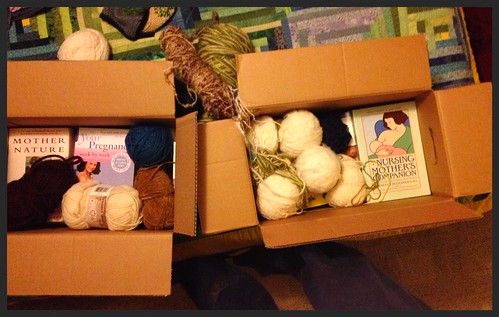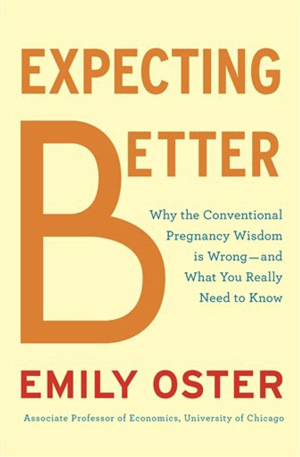**The information provided below was gathered from peer-reviewed journals and trusted sites. If you have questions about the data presented, please contact CraftedBirth@gmail.com or speak to your pediatrician**
For a printable version of this information, please click HERE.
CIRCUMCISION
What is it?
In infant boys the foreskin is fused to the tip of the
penis (like the skin is fused around a fingernail). As an intact penis grows,
the foreskin begins to separate from the tip, and can usually be fully
retracted by age 10. Circumcision removes the foreskin. It is usually performed
within a few days of birth by a pediatric surgeon or a religious figure like a
mohel. In 2010, about 58% of newborn boys in the U.S. were circumcised; the
rate is about 30% in Canada, and less than 20% in Europe.1 The procedure is very common in the Jewish
and Muslim faiths.
How is it done?
The baby is placed on his back and his arms and legs are
restrained to prevent movement during the procedure. The baby will either have
a topical anesthetic applied to the surface of the penis or have numbing agents
injected into the base of the penis. The foreskin is first separated from the
tip with forceps and cut with surgical scissors or a scalpel to expose the tip.
Plastibell Method: a
clear plastic bulb is placed over the tip and covered with the foreskin. A
suture string is tied around the foreskin, squeezing it tightly against the
plastibell. The skin above the tie is cut with a scalpel surgical scissors. The
ring is left on and will fall off in 3—7 days when the wound heals.
Gomco Clamp: a
bulb is placed over the tip and covered with the foreskin. The clamp is placed
over the bulb and tightened until the skin is squeezed tightly against the
clamp. The foreskin above the clamp is then cut with a scalpel or surgical
scissors.
Mogen Clamp: the
foreskin is lifted through a clamp and pressed flat. The foreskin above the
clamp is cut with a scalpel.2,3,4
What are the potential risks?
The overall complication rate is about 1.5% (conclusive rates for individual
complications is not currently available). More
complications are seen with non-medical providers, non-hospital-based
procedures, “free-hand” methods, premature infants, and older children and
adults.5 While death due to circumcision complication
is rare, it has been reported (usually due to bleeding, infection, and shock).6,7
Pain:
Doctors may use topical numbing cream and/or a numbing injection to help ease
the pain, as well as a pacifier dipped in sugar. A review of studies showed
that none of these interventions completely eliminated the pain response to
circumcision.8 The
“Ring Block” injection is the most effective at blocking pain. All
interventions run the risk of complications (8-14% show skin redness, swelling,
irritation from topic cream; 11% show bruising from injection).9 Circumcision without
anesthesia is extremely painful, so make sure your pediatrician, obstetrician,
or mohel uses anesthesia and waits at least 30
minutes after application before proceeding with the circumcision.
Bleeding:
Blood loss is often minimal, but in rare cases the frenular artery bleeds and
requires sutures. If this occurs at home, blood loss may be substantial and
cause shock or death. Undiagnosed blood disorders, such as hemophilia, can also
lead to dangerous bleeding and if there is a family history of bleeding
illness, circumcision is not recommended. (Note: because infant blood volume is
low, even losing 1 oz of blood can cause shock, and losing 2.3 oz of blood can
be fatal.)6
Infection: The
incision can become infected. The infection rate is higher with the Plastibell
method, as the foreign object remains on the penis for several days.7 Infection is also a specific concern with
the Orthodox Jewish metzitzah b’peh
ritual, where the mohel sucks the blood away from the penis with his mouth
(which can also spread other diseases like Herpes).5
Meatal Stenosis: the
narrowing of the urethra which can interfere with urination and require surgery
to fix.7
Adhesions:
pieces of the foreskin remain stuck to the head and must be removed surgically.
Too much/too
little/uneven skin removal: If too much skin is removed, a man may
not have enough skin for an erection, and the skin may split. If too little
skin is removed, the excess skin can slide back over the tip and scar, causing
phimosis (when the foreskin cannot be retracted). If the skin removal is
uneven, the penis may curve to one side. This is called Chordee, and may be
treated with additional surgery. Note: some penile curvature is natural.7
What are the potential benefits?
HIV/AIDS:
African studies have shown a decrease in HIV/AIDS infection when heterosexual men are circumcised. The theory is that the
underside of the foreskin is more susceptible to infection (it contains more
“target cells” for bacteria and disease).5
Circumcision would remove this susceptible skin. However, these studies are
criticized because of the methods used and because the results cannot be
duplicated in the United States and other developed countries (discussed
below). The American Academy of Pediatrics states that circumcision is most
beneficial in populations of very high HIV rates.10
Urinary Tract Infection
(UTI):
Only for boys with recurrent
UTIs, circumcision can reduce the number of infections. The rate of UTI for
healthy infants is about 1% for both circumcised and intact boys, and this rate
declines as the boy ages.9
Why the controversy?
Disease:
- HIV/AIDS: Many disagree on the reliability of the
African HIV studies. The circumcised men were put into different environments
than their intact peers, with acess to clean water and soap, and the results
have not been duplicated in the United States or other developed countries.11,12 Additionally, many believe
that the studies have actually done more harm in Africa, as they may have
instilled a false belief that circumcision alone prevents the spread of HIV. An
alternate view states that instead of preventing sexually-transmitted diseases
with surgery, men and women should be encouraged to use condoms and other
safer-sex practices.
- Human Papillomavirus (HPV) & Penile Cancer: Similar
to the HIV studies, results show a decrease in HPV infection in circumcised
African men, but these results have not been duplicated in the U.S. Again, an
alternate view states that condoms and the HPV vaccine is just a good at
preventing HPV in men and women, and Penile Cancer in men (which can be caused
by HPV).5
Ethics:
- Autonomy: Many parents believe that it is wrong to
permanently alter a boy’s body when he cannot consent; however others argue
that parents make medical decisions for their children all the time (for
example, vaccination or medications).
- Tradition and Culture: Some equate male circumcision
with female-genital-mutilation, which is illegal is many countries, including
the U.S.; however many people believe circumcision to be a valuable and
important part of their religion and culture.
- Elective Surgery: Some liken circumcision to elective
cosmetic surgery, something that would never be allowed on an infant.
Official
Recommendations: The American Academy of Pediatrics’
statement about circumcision is ambiguous:
“Although health benefits are not great
enough to recommend routine circumcision for all male newborns, the benefits of
circumcision are sufficient to justify access to this procedure for families
choosing it and to warrant third-party payment for circumcision of male
newborns.”12
Thought Starters:
Do you believe the benefits of circumcision
outweigh the risks?
Do you believe it is your job as a parent to
make this decision for your son?
Are there any other positive factors to
consider?
Do those factors outweigh the risks?
Are there any other negative factors to
consider?
Do those factors outweigh the benefits?
—---------------------------------------------------------------------------–
Like what you've read? Pregnant and looking for a class in Western/Central Massachusetts?Check out our current class schedule here.
Questions? I'm never very far away from my email.

Follow Crafted Birth on Facebook for updates and birth-related resources.
—---------------------------------------------------------------------------–
Sources:
1. Wikipedia contributors.
"Circumcision." Wikipedia, The Free Encyclopedia. Wikipedia, The Free Encyclopedia, 23 Jan. 2014. Web.
26 Jan. 2014,
http://en.wikipedia.org/wiki/Circumcision
2. Morris, B. J. “Circumcision—The Procedure
Itself” 2013,
http://www.circinfo.net/the_procedure_itself.html
3. Scheve, Tom. "How Circumcision
Works" 20 January 2009. HowStuffWorks.com. 26 January
2014,
http://people.howstuffworks.com/circumcision4.htm
4. Wikipedia contributors. "Circumcision surgical procedure." Wikipedia, The Free
Encyclopedia. Wikipedia, The Free
Encyclopedia, 19 Oct. 2013. Web. 26 Jan. 2014,
http://en.wikipedia.org/wiki/Circumcision_surgical_procedure
5. Meilke, R. T. “Counseling Parents Who are Considering Newborn Male Circumcision”
J. Midwifery Womens Health, 2013;58:671-682
6. Frisbie, D. “Death from Circumcision” The Male Infant Circumcision
Information Site, 2010,
http://www.circinfosite.com/45.html
7. Newborn Nursery at Lucile Packard Children's
Hospital , “Complications of Circumcision” Stanford School of Medicine, 2014,
http://newborns.stanford.edu/CircComplications.html
8. Brady-Fryer B, Wiebe N, Lander JA. “Pain relief for neonatal
circumcision” Cochrane Database of Systematic Reviews 2004, Issue 4,
http://summaries.cochrane.org/CD004217/pain-relief-for-neonatal-circumcision#sthash.t0sibvLf.dpuf
9. American Academy of Pediatrics Task Force on Circumcision, “Technical Report: Male Circumcision”
Pediatrics 2012; 130:3 e756-e785,
http://pediatrics.aappublications.org/content/130/3/e756.full
10. Young, M.R, et al. “Factors Associated With Uptake of Infant Male Circumcision for HIV Prevention
in Western Kenya.” Pediatrics 2012; 130:1 e175-e182
11. Frisch, M. et al. “Cultural Bias in the AAP’s
2012 Technical Report and Policy Statement on Male Circumcision”
Pediatrics 2013; 131:4 796-800,
http://pediatrics.aappublications.org/content/early/2013/03/12/peds.2012-2896
12. American Academy of Pediatrics, “Circumcision
Policy Statement. Task Force on Circumcision” Pediatrics, 2012; 130:3, 585
-586.
http://pediatrics.aappublications.org/content/130/3/585.full





